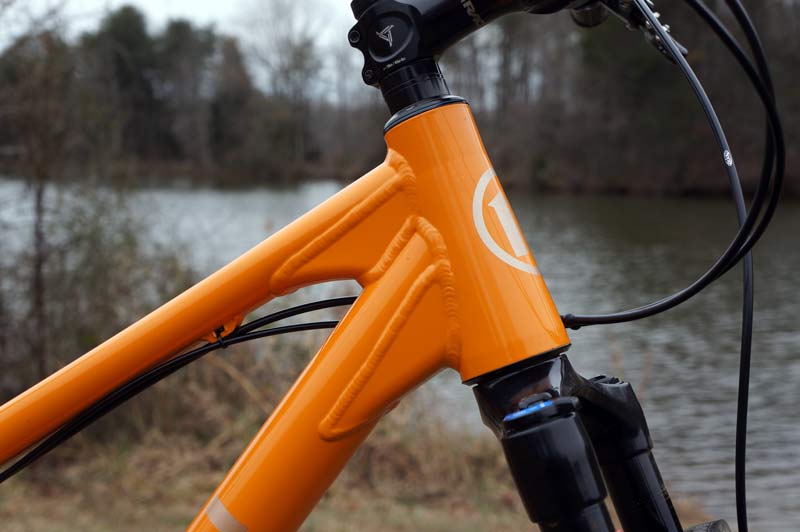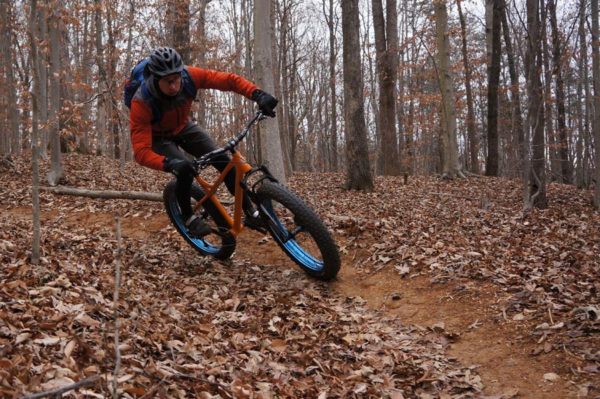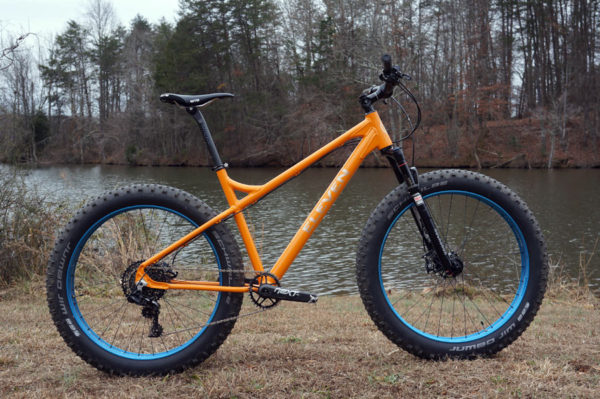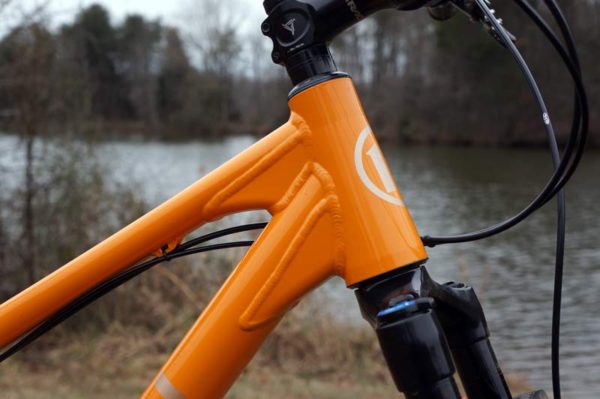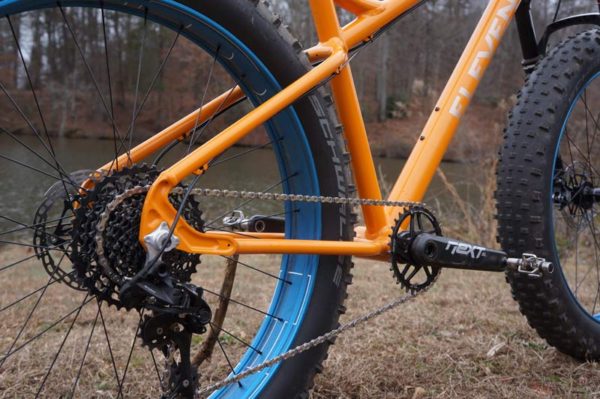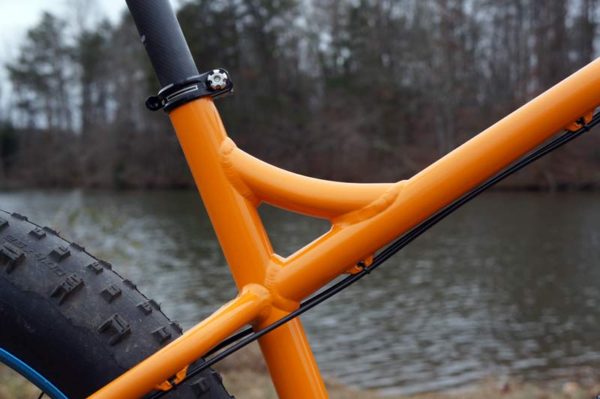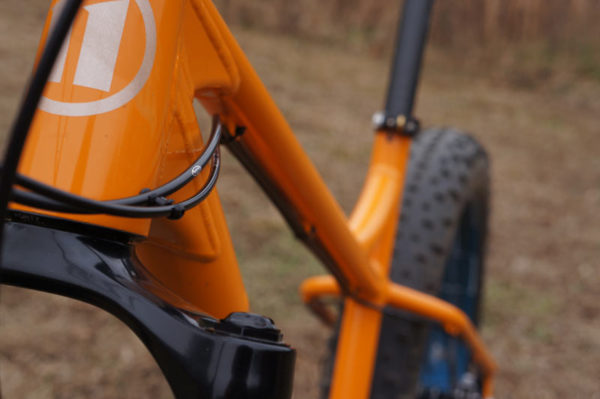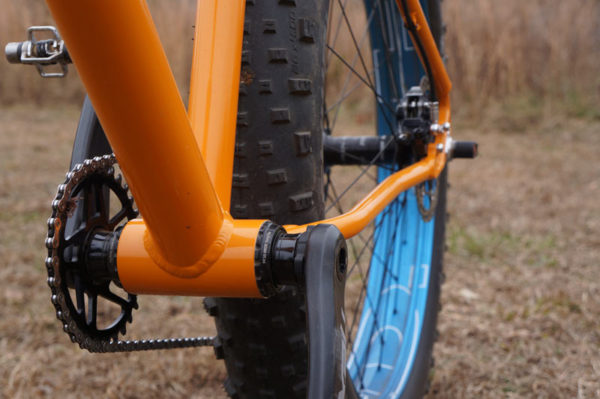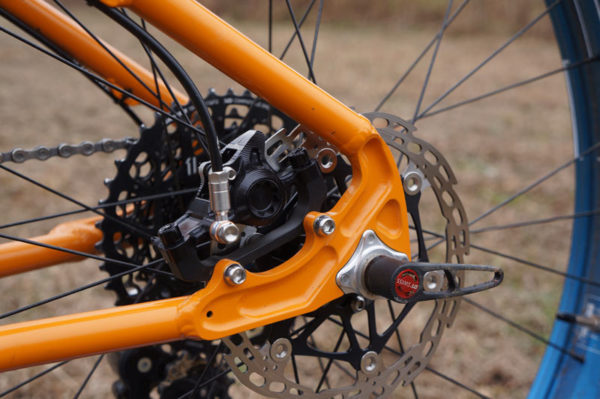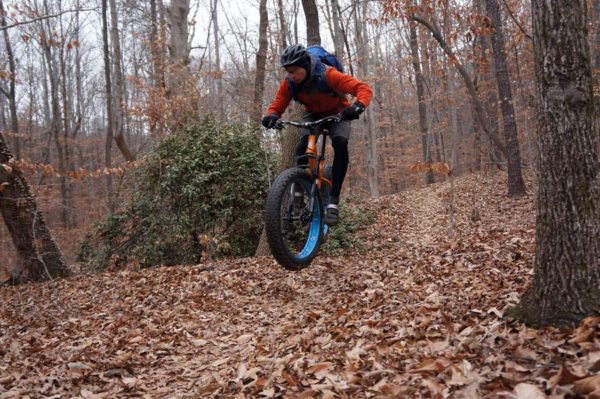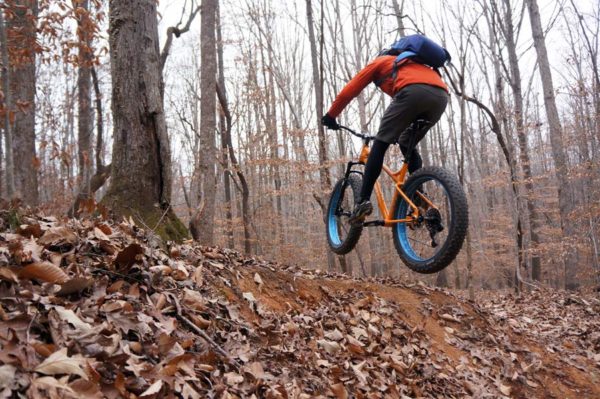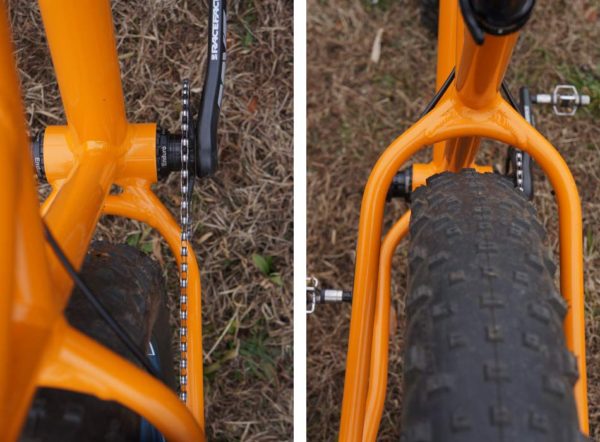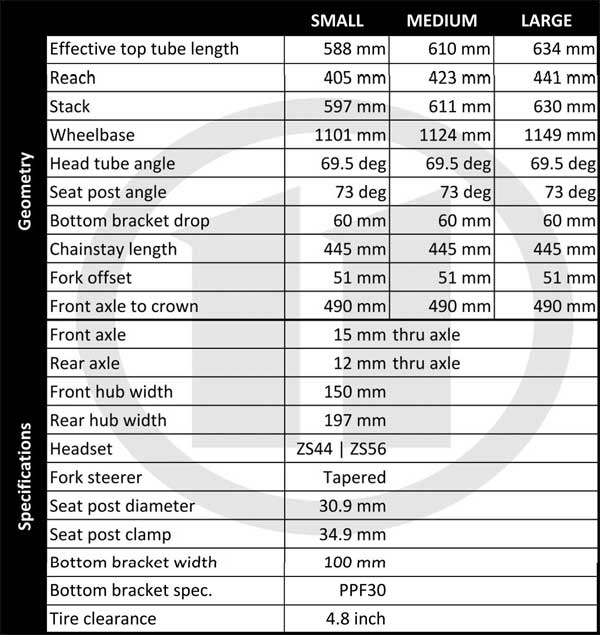After meeting Eleven Bikes’ founder Thomas German at a ‘cross race a few weeks ago, we set a date for him to come visit Bikerumor HQ and go for a ride. It also gave us a chance to discuss the brand, his design background and philosophy, and spec decisions in far greater detail than our first post on the brand.
Thomas comes from motorsports, with several Indy and NASCAR championships under his belt as head engineer for some of the top teams. His role was (and still is on occasion) to set up the car’s suspension and other variables to optimize performance at a specific track and in specific conditions. In that environment, any weak link is a life threatening risk, which is why he spent a lot of extra time with the builder to have the frame constructed a certain way to pass their own aggressive testing. And since he was used to tuning ride characteristics using the soft points like suspension and tires while keeping the chassis as stiff and strong as possible, he carried that philosophy over, too. His bikes have straight tubes, with reinforcements at key joints, to make it very stiff. Compliance is adjustable with the fork and tires. It’s an interesting take, and the geometry makes it even more so…
The frame starts with 6061 alloy tubes and keeps them all straight, save for the front of the chainstays. Thomas liked the DJ bike look, with the top tube running straight into the seatstays, so larger sizes get an extra tube to reinforce the top of the seat tube. I rode this size large built up with Rockshox Bluto fork, SRAM GX, Race Face Next SL cranks and Turbine 35 stem / SIXC handlebar, Wolf Tooth oval 32T chainring, Hope carbon seatpost, HED alloy rims with Hope Pro 4 hubs and Schwalbe Jumbo Jim tires, and WTB saddle. Claimed weight was 27 pounds, retail as shown is $4,185.
Two gussets reinforce the head tube, and an oversized downtube runs down to a large PFBB30 shell.
Cables are all run externally, but he worked hard to get them running tidily under the top tube and seatstays. This makes repairs and replacements easier without messing up the clean lines of the frame.
German says he really wanted to do a standard threaded BB, but needed the extra diameter of the PFBB30 shell to stick the other tubes to…and so you could run an eccentric bottom bracket to set it up as a single speed. For geared setups, he turned to the Enduro TorqueTite thread-together BB so there’s no creaking.
Another nice touch is that the rear brake caliper is completely protected inside the frame, shielded from rock strikes, etc. All frames are made in Portland, USA, and are shipped to ELEVEN’s Statesville, NC, headquarters raw so they can inspect every weld. From there, to go to nearby Mooresville, NC, for powder coating. German says he chose this finish over paint because it’s more durable. The logo decals are baked in so they won’t peel off or get scratched.
Now, about the geometry. All three frame sizes (S/M/L) get a 73º seat tube angle and 69.5º head angle. Compare that to the en vogue “trail” geo that uses a steeper seat angle and slacker head angle and this seems counterintuitive. And it feels different. For the first half of our ride, I felt like I was reclining back into the seat and sitting low. This despite getting proper leg extension and feeling otherwise balanced on the bike. At the halfway point, Thomas confirmed my suspicions by explaining his geometry theory as such: The head angle is steeper to keep steering sharp. The seat angle is slacker to put enough weight over the rear tires for climbing traction.
Turns out, this makes a lot of sense for a fat bike. It’s not an enduro bike meant for racing down hill where a slacker head angle would be beneficial. Rather, it’s for the XC style trails, beaches and snow covered paths typically ridden on a fat bike. The quick steering negated any tire squirm on the tight, twisting sections, keeping the bike agile on technical singletrack. If it were mine, I’d put a slightly shorter stem on it (this one had a 90mm) to reduce the overall reach.
Chainstays are a reasonable 17.5″, which makes room for a max 4.8″ tire (4.0″ tested here). It adds up to a bit longer wheelbase than a super tight XC bike would have, but that adds stability on the straights to counterbalance the steep front end. That, and the long front end, make it a bit harder to pull the front wheel up and over logs, but only a little bit.
Overall, the bike is nimble and easy to flick around the trail. The geometry and design philosophy are a split from the norm these days, but it’s nice to see someone thinking outside the box. At the end of the day, the bike was made to check off all of Thomas’ strength, quality and handling wish list items. The bonus is it seems like a bike that’ll impress others, too. I certainly was.
